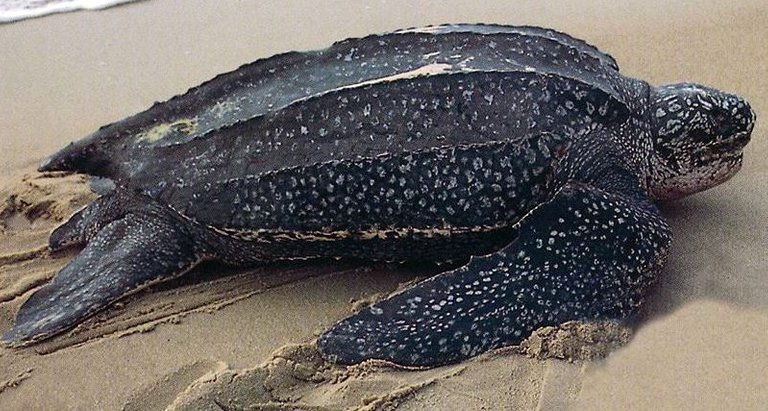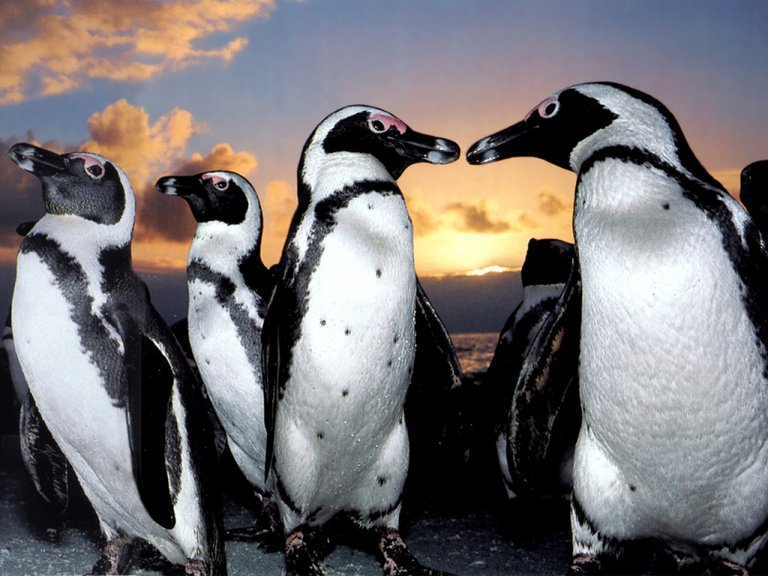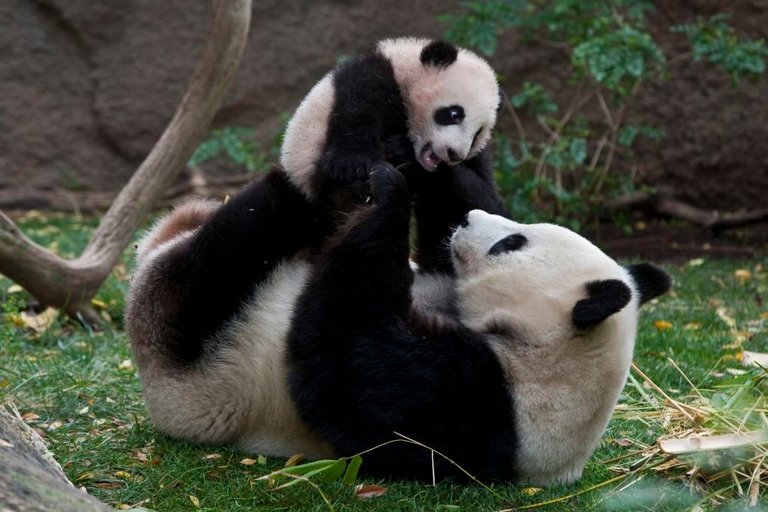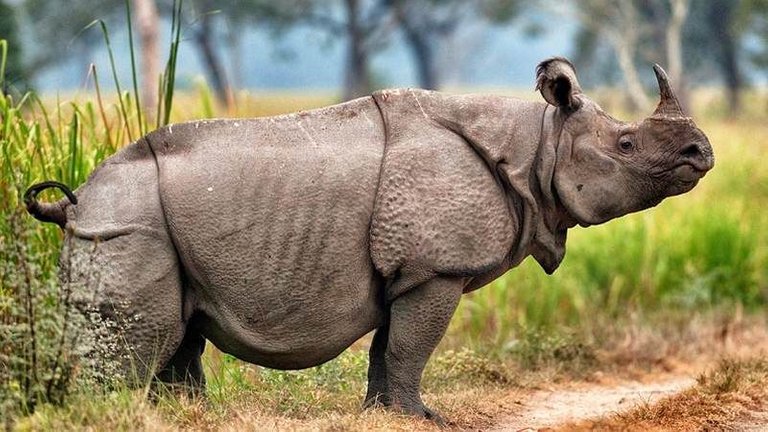Hello everyone.
Finally we have reached the end of our list of 15 animals in danger of extinction, with these last 5 culminate this work that others have tried to present, I do not know if the fact that I present it through this network, as Steemit is able to do the difference, but I feel happy, because I think I'm contributing something, I think these words and these images can make a difference in our way of thinking.
People apparently do not understand, that this is the only planet we have, that these species are unique, that they are here because of thousands of years of evolution and if any of them disappears, we would be leaving a huge hole in the site where they were some day, without counting the terrible consequences, that this would bring, on the ecosystems, the imbalance, that would bring as a consequence, without more here I leave our last 5 friends in danger.
11.- Vaquita Marina

The vaquita marina or as it is known scientifically, Phocoena sinus, is a cetacean that belongs to one of the 6 known species of porpoises, it is the smallest cetacean in the world measuring around 1.5 meters and weighing 50 Kg, its habitat is located only in the Gulf of California.
The fact that there are only about 97 specimens of vaquita marina makes it practically impossible to have the chance to see any of them live. One of the biggest threats of this animal is the fishing with gillnets, which are carried ahead a large number of specimens each year making it difficult to repopulate.
In essence, the threat of the vaquita is primarily man, which on the one hand is bad news but on the other is good, since it means that it is up to us to avoid its total extinction.
12.- Leatherback turtle

(Dermochelys coriacea) is the scientific name that is attributed to our leatherback turtle, this is the largest of the sea turtles, and one of the largest reptiles on earth, its shell can measure between 1.2 and 2.4 meters , and a weight between 225 and 900 Kg, without counting that it is thought to be one of the oldest that has inhabited the planet, with more than 150 million years of existence.
Their habitat is demarada of the following way, the leatherback turtles have the widest geographic distribution of all the species of marine turtles. They are found throughout the Pacific, the Atlantic and the Indian Ocean. In the Pacific, its range extends to northern Alaska and south beyond the southern tip of New Zealand.
In the Atlantic, it can be found from northern Norway and the Arctic Circle to the southern tip of Africa.
The leatherback Pacific population has decreased by more than 90 percent in the last two decades, mainly due to bycatch in commercial fishing gear, particularly longlines and gillnets.
These turtles are also vulnerable to the persecution and harvest of their eggs and meat for human consumption in many parts of the world.
Also, these ancient creatures are also vulnerable to the ingestion of floating marine debris, such as discarded plastics. Plastic bags and balloons resemble their favorite prey, the jellyfish, and when they ingest any of these wastes by accident, the digestive tract may be blocked, preventing them from eating.
13.-Magellanic Penguin

Spheniscus Magellanicus, commonly called Magellanic Penguin or Patagonian Penguin, Species of bird, of the family of penguins Spheniscidae, that nests in the Malvinas Islands and in the coasts and islands of the Patagonia of Argentina and Chile. It migrates northward in the winter reaching the waters of Uruguay and Southeast of Brazil with more temperate temperatures and is a species in Peru, Australia, and other South Atlantic islands.
Regarding the reasons for the decline of its species is due to different factors. In the first place, the fishing industry is responsible for the disappearance and division within its habitat, but there are also other reasons such as predators, among which we highlight the leopard seal and the gallows.
In addition, eggs are laid on the ground and are generally eaten by aerial predators such as pigeons and gulls as well as armadillos and foxes. The latter two also tend to attack the offspring when the parents do not pay attention.
And of course, the human being also has its responsibility in this regard, and that is that the Magellanic penguin has been strongly used to take advantage of its fat and oil, while another reason for its situation are oil spills.
14.-Panda

The giant panda, as it is known, is indigenous to central China and has been identified as an endangered mammal. The populations of this animal are constantly checked in an attempt to guarantee its safety and increase the number of copies.
Currently, about 188 pandas are identified living in captivity and more than 1,600 are their natural habitat. Thus, the Sichuan Mountains and Tibet are the regions with the largest locations.
Panda bears are identified by their white fur (yellowish medium) with black spots and plump body; traits that become survival mechanisms because they help camouflage and scare enemies, the latter given by the appearance of his face.
A giant panda usually measures up to 95 cm in height at the withers and 1.5 m in body, with the head included; the tail measures 13 cm, while its weight is usually 160 kg.
Due to extensive habitat destruction, pollution and poaching, pandas are in danger of extinction. The first measures to conserve this animal, were taken in 1958, although it was not until the decade of the 90 when important advances were made. The biologists learned about their reproductive habits and realized that the pandas were quite complicated.
Female pandas can begin to mate after 4 or 5 years of age. They have the heat for only 3 days and they mate every 2 or 3 years. A female panda may have only one or two offspring at a time, and in the case of two, only one will survive.
15.- Java Rhinoceros

The rhinoceros of Java is one of the species of rhinos that are currently on earth. It is a rhinoceros that belongs to the same genus as the Indian rhinoceros and they have many characteristics in common, being different in size.
The habitat of the Java rhino was originally from the area of the Java and Sumatra islands to India and China, distributed in three different populations. After seeing its population greatly reduced, it can only be found on the island of Java, in Indonesia, specifically in the Ujung Kulon National Park.
Among the characteristics of the java rhinoceros, it is also worth mentioning that it is an animal that has good hearing and above all smell, but its vision is bad.
In addition, this species was reduced for years by the loss or reduction of its natural habitat and by predatory hunting and for the use of its small horn at the hands of poachers. It is currently protected in natural reserves, since there are no specimens in captivity, but despite this there is still the risk of disappearing since genetic diversity is being lost, there are many diseases that can afflict them, and especially because they continue without being safe from the danger posed by poachers.
This has been all for the moment, on the subject, I thought that at the end of the lines, my conscience would be a little calmer, but the truth is that no, now I feel that I have to do something more, that things can not be left so, that someone has to stand up and raise their voices, for all those species, who have no voice, and who are at the mercy of unscrupulous people who have no feelings and who care little about what may happen to them, I am favor of life, if you read this publication until the end, I invite you to join this campaign to preserve the lives of animals, remember that our ecosystem is unique and consists of a delicate balance, which depends on its integrity. I only have to say goodbye, thanking you for reading my publication.
For more information, visit this pages:
https://www.medioambiente.net/la-vaquita-marina/
http://www.tortugaswiki.com/tortuga-baula
http://revistamadretierra.com/2015/07/pinguino-de-magallanes/
http://maternidadfacil.com/oso-panda-finge-un-embarazo-para-obtener-mas-comida/
Atte.
@ jorge150785
World of Photography Beta V1.0
>Learn more here<
Thank you for participating in #animalphotography, the weekly selection will be released on Tuesday.
You have earned 5.15 XP for sharing your photo!
Daily photos: 1/2
Daily comments: 0/5
Multiplier: 1.03
Server time: 21:07:45
Total XP: 15.30/100.00
Total Photos: 3
Total comments: 0
Total contest wins: 0
Follow: @photocontests
Join the Discord channel: click!
Play and win SBD: @fairlotto
Developed and sponsored by: @juliank